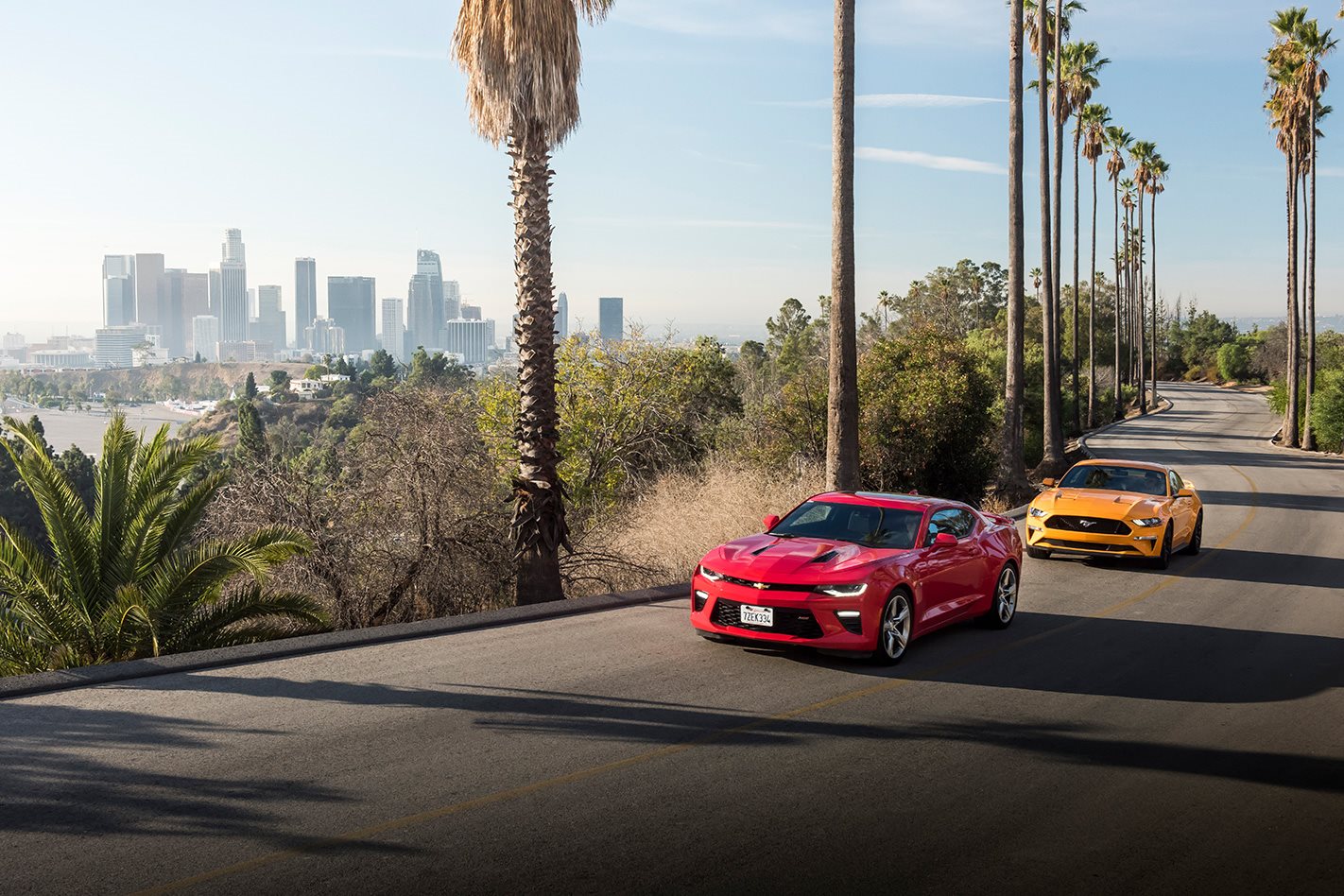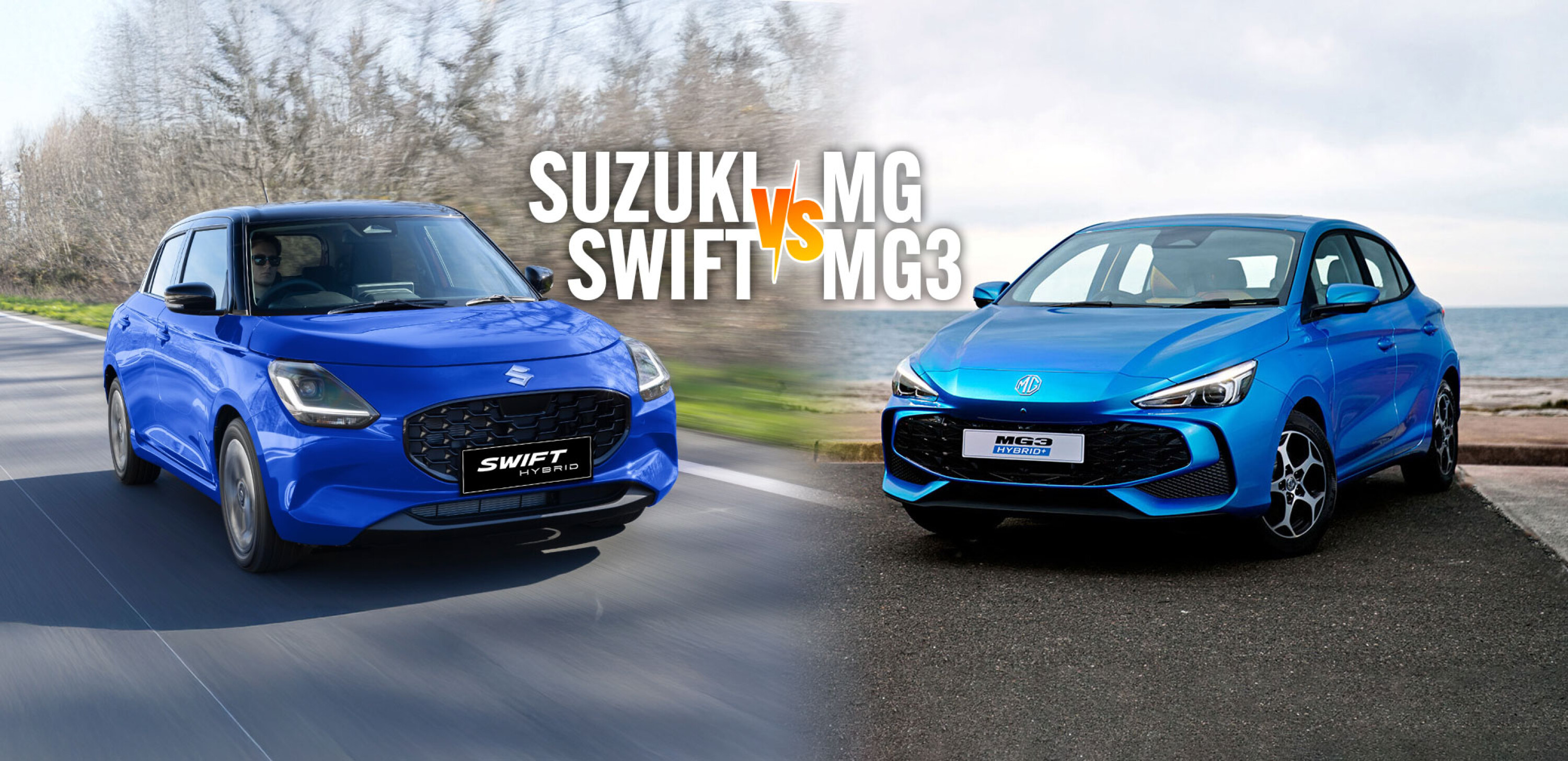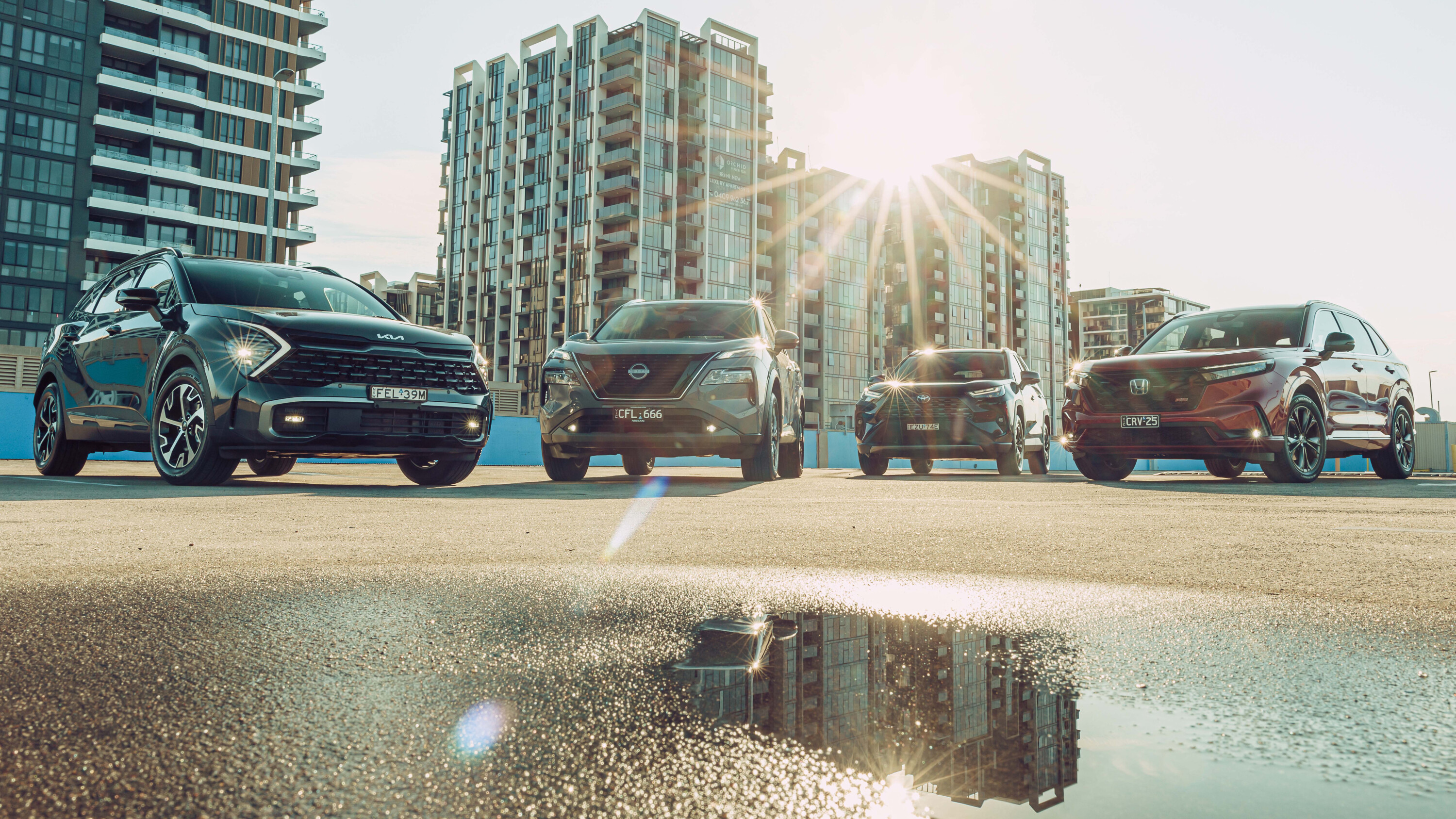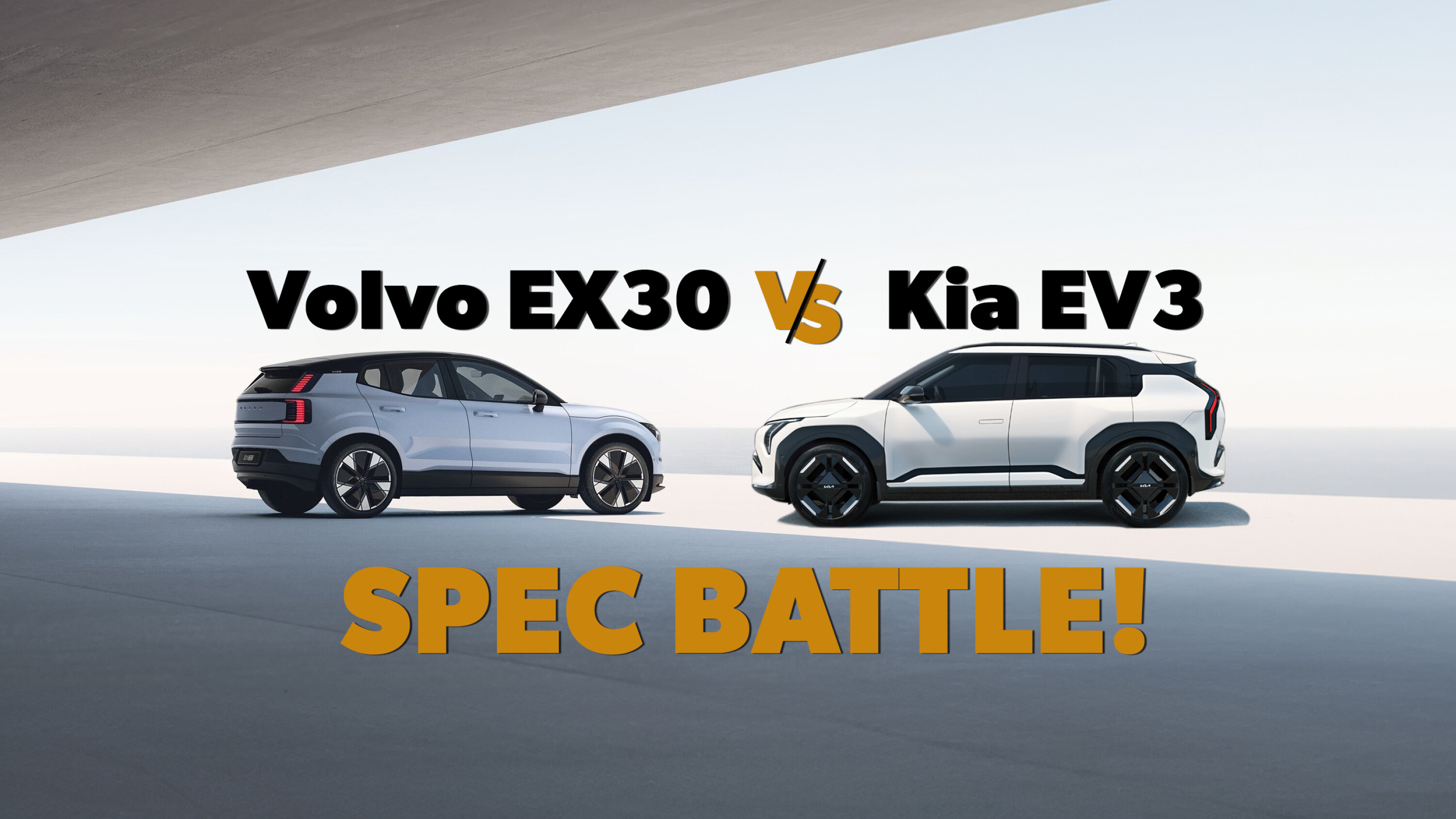SUNSET over Los Angeles is one of the greatest pseudo-natural spectacles the sprawling Californian metropolis has to offer.
The stunning show of colours is the result of a cool ocean on one side of the city, mountains on three others, something called an inversion layer and tonnes upon tonnes of vehicle exhaust belched into the atmosphere every day.
Californians are addicted to their cars and the atmosphere bears the scars.
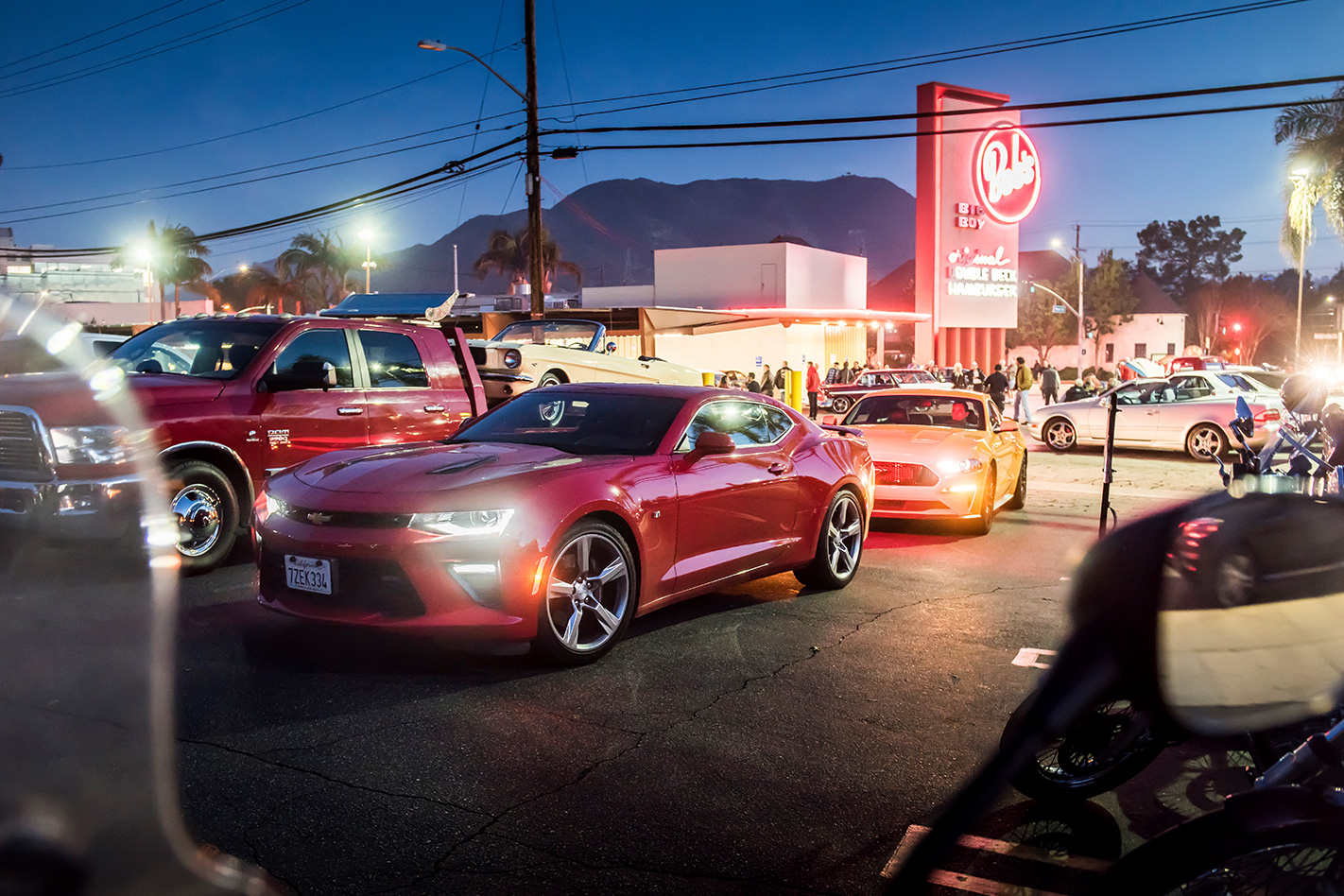
Just weeks before I arrive, the beauty of LA’s surrounding country was razed by bush fires. The torrential rain and mudslides that followed left little more than dirt. It was a grim metaphor for LA’s celebrity facade, where stars promenade the red carpet while 20,000 people sleep under bridges.
In LA there’s always another story playing out just below the surface and you don’t have to dig too deeply to find it. It’s the same with the two cars you see here.
The pony car feud between the Ford Mustang and Chevrolet Camaro has been raging on US soil for half a century but the more interesting underlying story is their new significance in Australia, where the two arch enemies will bump gloves for the first time this year. I’m here to get a taste of how the new Camaro stacks up against the Mustang before the brawl kicks off, and to see whether either one can help soften our grieving for the passing of the home-grown rear-drive V8.
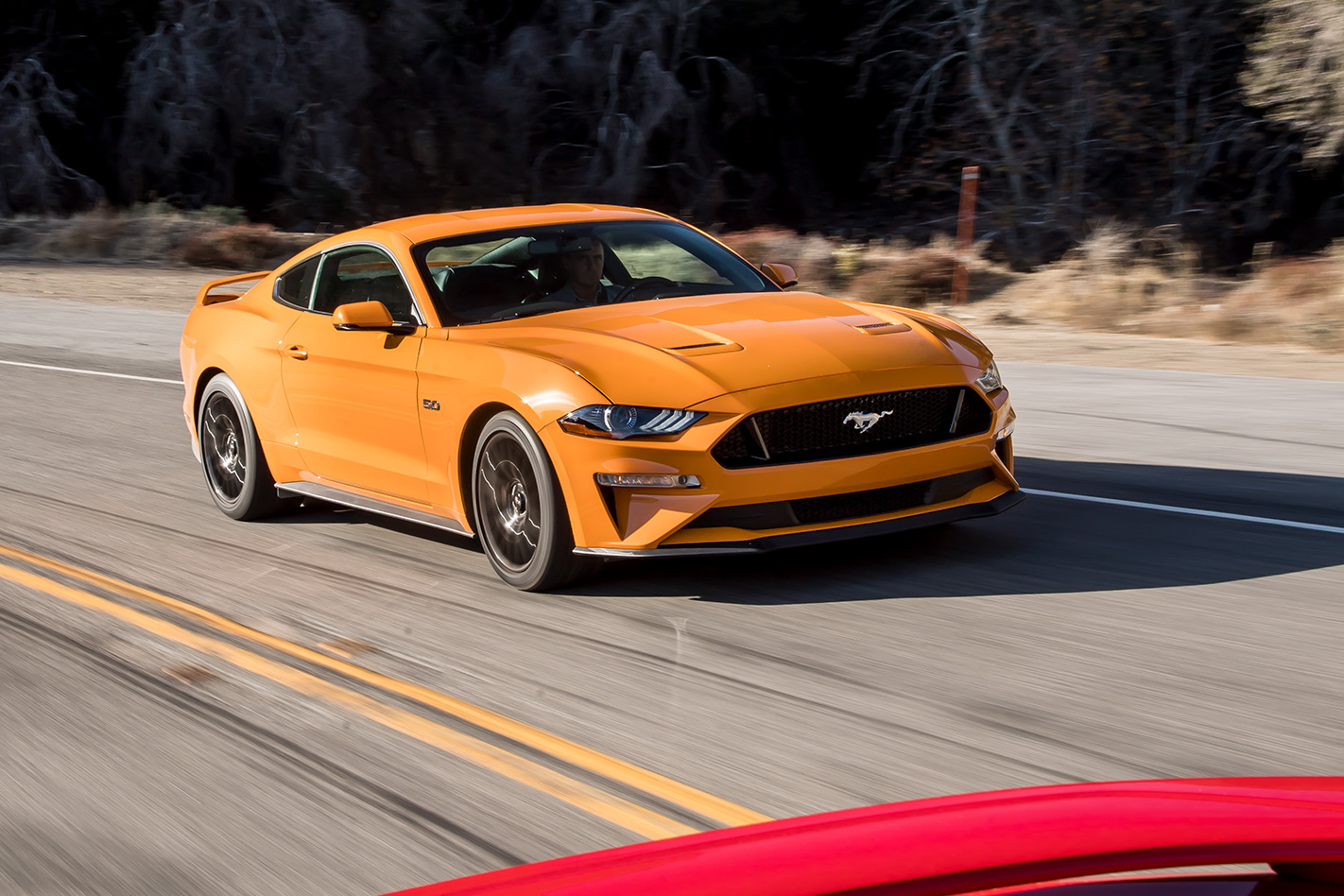
In the Blue – or, erm … ‘Orange Fury’ – corner, the Mustang’s styling gets a lot done with a little. There’s a simple purity to its lines and an elegance that hints at the Ford’s aim of appealing in many markets. While previous generations worked a home crowd, this version must appeal to European, British, Japanese and Australian buyers. Little has changed for the 2018 car and that’s no bad thing. The Mustang is as handsome as ever, the reshaped LED headlights and lightly redesigned bonnet and grille the only giveaways this is the well-revised 2018 model.
In the Red corner, however, the Camaro sacrifices elegance in the name of outright tensed-bicep brawn. If you’re seeing a little Corvette DNA in the exterior, you’re not imagining it. Of the two, it’s the Chevrolet with the most presence and a decidedly American stance, but that low roofline has had a dramatic effect inside the car as well.

Among the most common criticisms of the current Mustang is the interior; specifically the lack of luxurious materials or niceties. Yet any assessment also needs to factor in the price. Yes, Ford Australia could have homologated the excellent Recaro seats and the machined aluminium dash that’s available to American buyers as an option, but then the ’Stang wouldn’t be a $60K car anymore. The update hasn’t brought dramatic change in the Mustang cabin, yet this doesn’t allow the Camaro to steal any points for quality or design.
They’re both fairly basic, as muscle coupes have always been. There are highlights such as the pair of auxiliary gauges and retro-inspired design for the Ford, and its sharp screen resolution, but both cabins are scattered with plasticky switches and trim that merely adds up to the sum of their cheap ’n’ cheerful parts.
But muscle cars are about looking cool and feeling good. And the true test of how well Ford and Chevrolet have plied their craft lays in a good, hard drive.
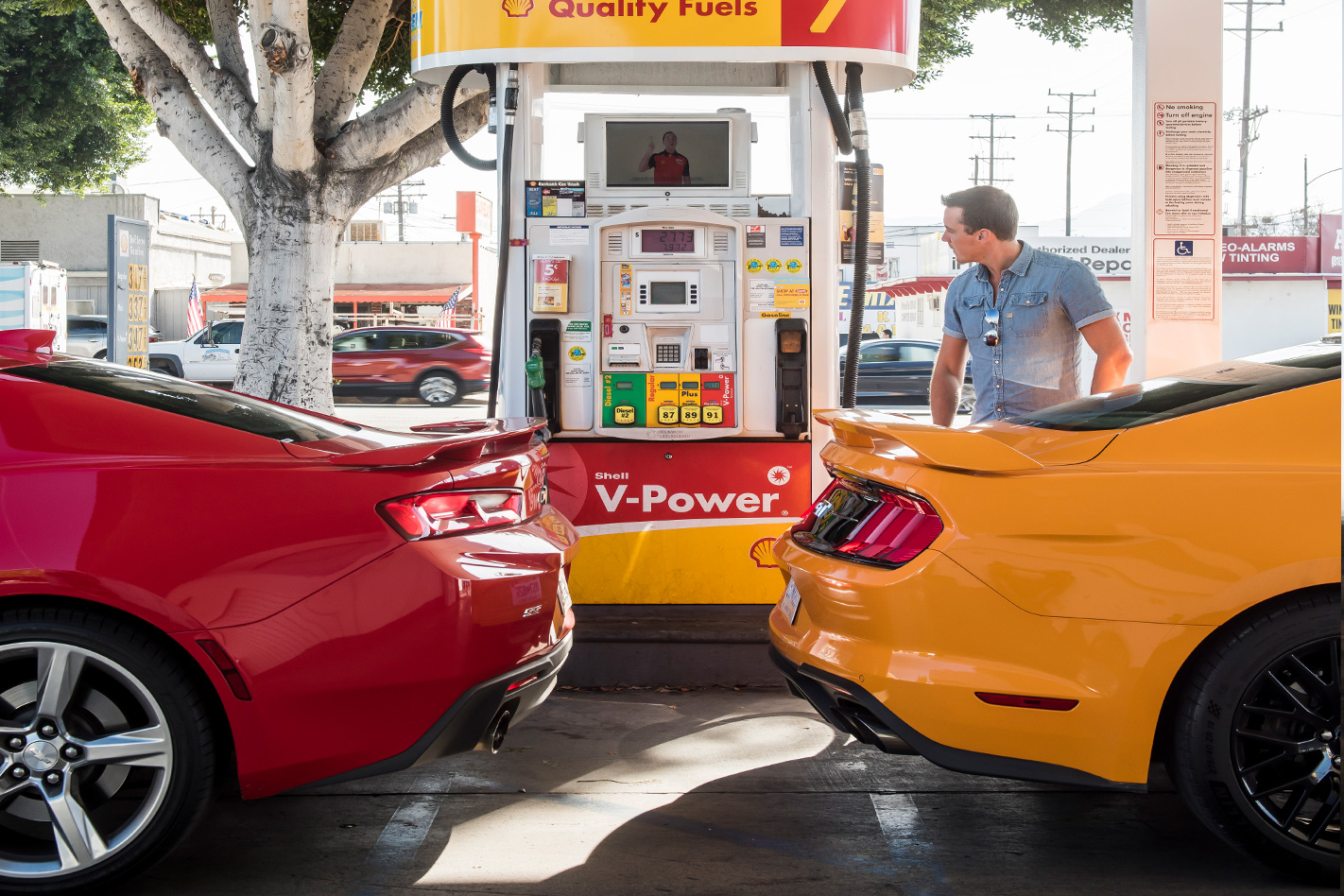
When the congestion eased and we could drive at a stroll, the Ford’s wheels hopped over each joining seam of the LA-standard concrete-slab freeway at a maddening tempo. The Camaro ironed the creases more effectively, perhaps as a result of a chassis tune that’s been tailored especially for US roads, unlike the global Mustang. But we won’t really get to the bottom of ride comfort until they hit Australian roads.
Perhaps it was the frustration of sitting in seemingly endless tailbacks, but at the sniff of canyon roads on the outskirts of LA’s suburban sprawl, the muscular pair leap from their haunches with a satisfying vigour and, in the Ford, the sort of soundtrack I was jonesing for.
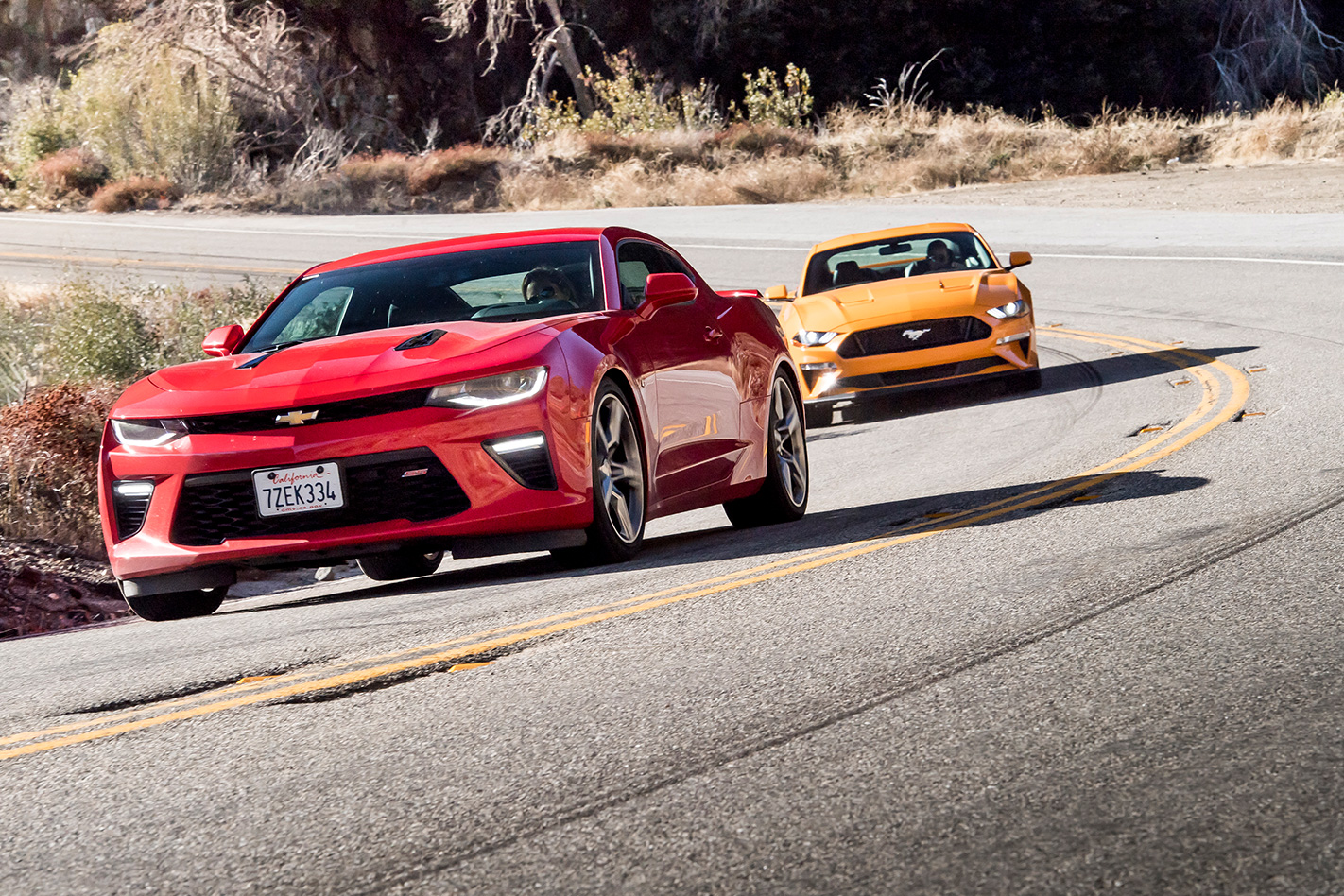
Switch to the Ford however and the 343kW (Aussie GTs will have 339kW) double overhead cam Coyote V8 shines. The bigger Chevy V8 prefers a short shift with decent low-down torque characteristics, but the Blue Oval equivalent is beautifully sophisticated and begs to be revved. As part of its 2018 update, Ford’s engineers extracted another 33kW from the 5.0-litre (see sidebar p75) and you can feel it.
We will have to wait for a local test to sample the new 10-speed auto fitted to the 2018 Mustang, but we can report that the new twin-plate clutch fitted to the six-speed manual makes life significantly easier on the left leg, as well as easing clutch modulation.
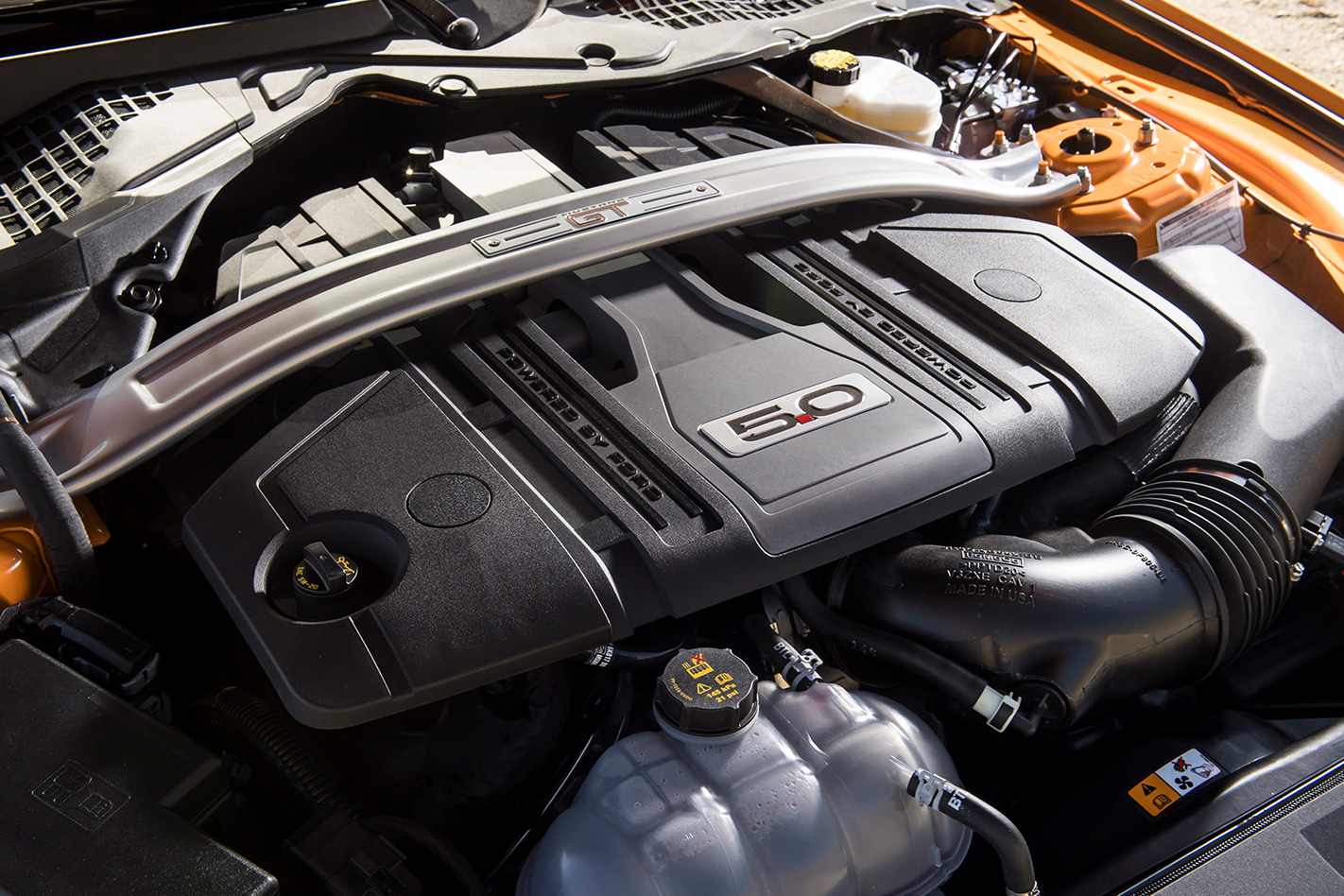
Spot a Mustang GT on Australian roads and you can almost guarantee it will have an aftermarket or optional Ford Performance exhaust fitted. It seems most owners take to the standard car’s all-bite, no-bark persona with a set of open pipes.
US buyers have to pay an extra $1000 for the Active Valve system, but thankfully Ford Australia has included it as standard in the GT. In normal mode the gorgeous stainless system sounds as serious as an atmo Mercedes-AMG 6.2-litre V8, but flick the drive mode to Sport and you are in for a treat. It’s like someone tripped over your Fender amp and accidentally rolled the volume to 11. When you strum a power chord all the windows explode.
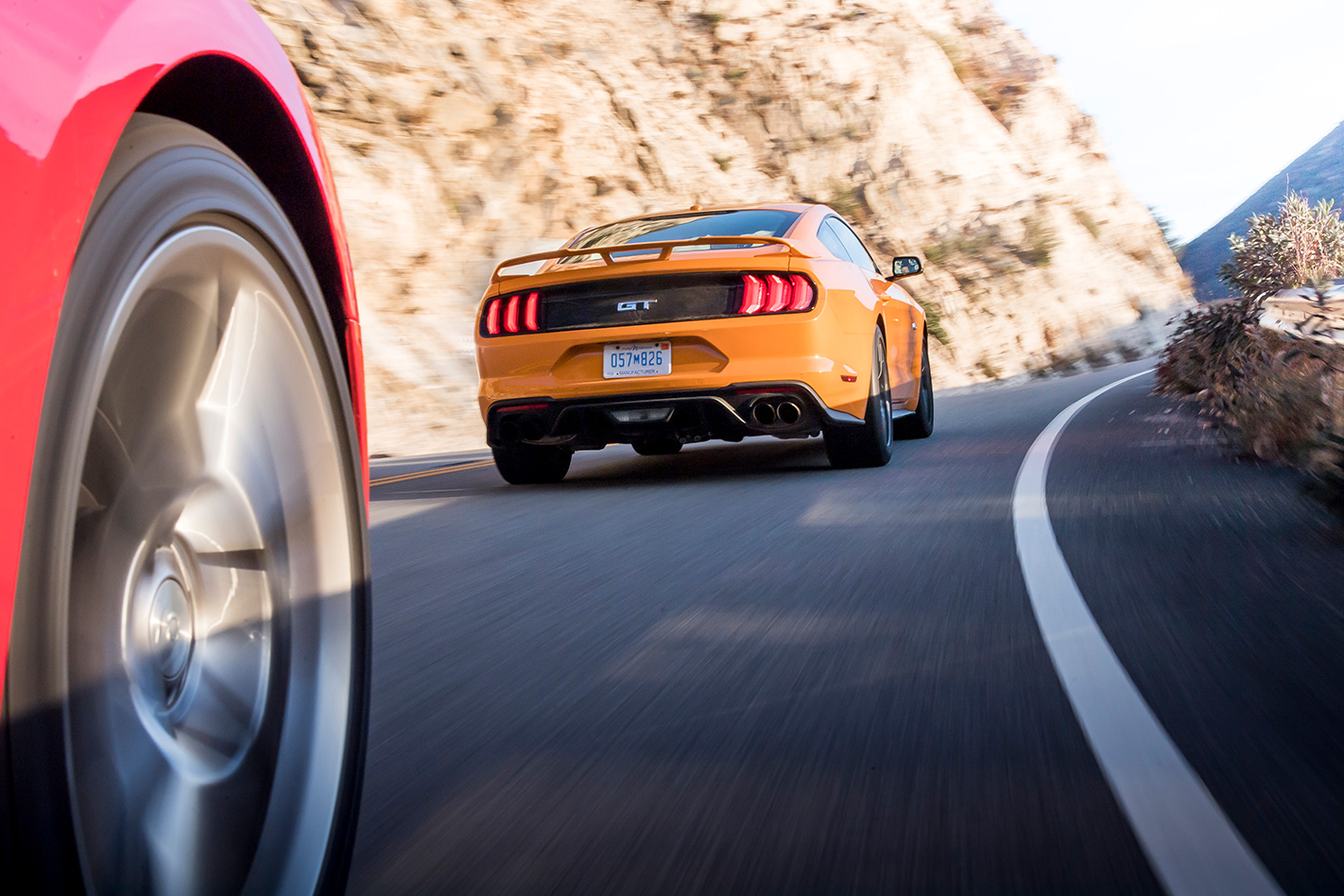
The bigger capacity Camaro is the torque champ with 614Nm (versus 569Nm for the Mustang) and the in-gear acceleration difference is clear. Despatching slow traffic with a swift overtaking manoeuvre takes less effort in the Camaro.
Unleashing this sort of grunt in this pair’s ancestors would be dangerous work, but they’ve come a long way.
I’ve grown to know the Mustang pretty well over a series of hard drives back home, so the pointy front end, vast lateral grip and engaging character are familiar. Optional MagneRide adaptive dampers are new for the 2018 version, the suspension has been retuned, and the good news is the Mustang has grown incrementally better.
Can the Camaro compare? Damn straight. Its voracious appetite for corners is the most surprising and satisfying part of the Camaro package. Where the Mustang has a suppleness in corners that is perhaps more comforting and accessible, the Camaro is seriously precise and flat. Owners with a taste for track days will gravitate towards the Chevy’s relentless desire to turn and burn.
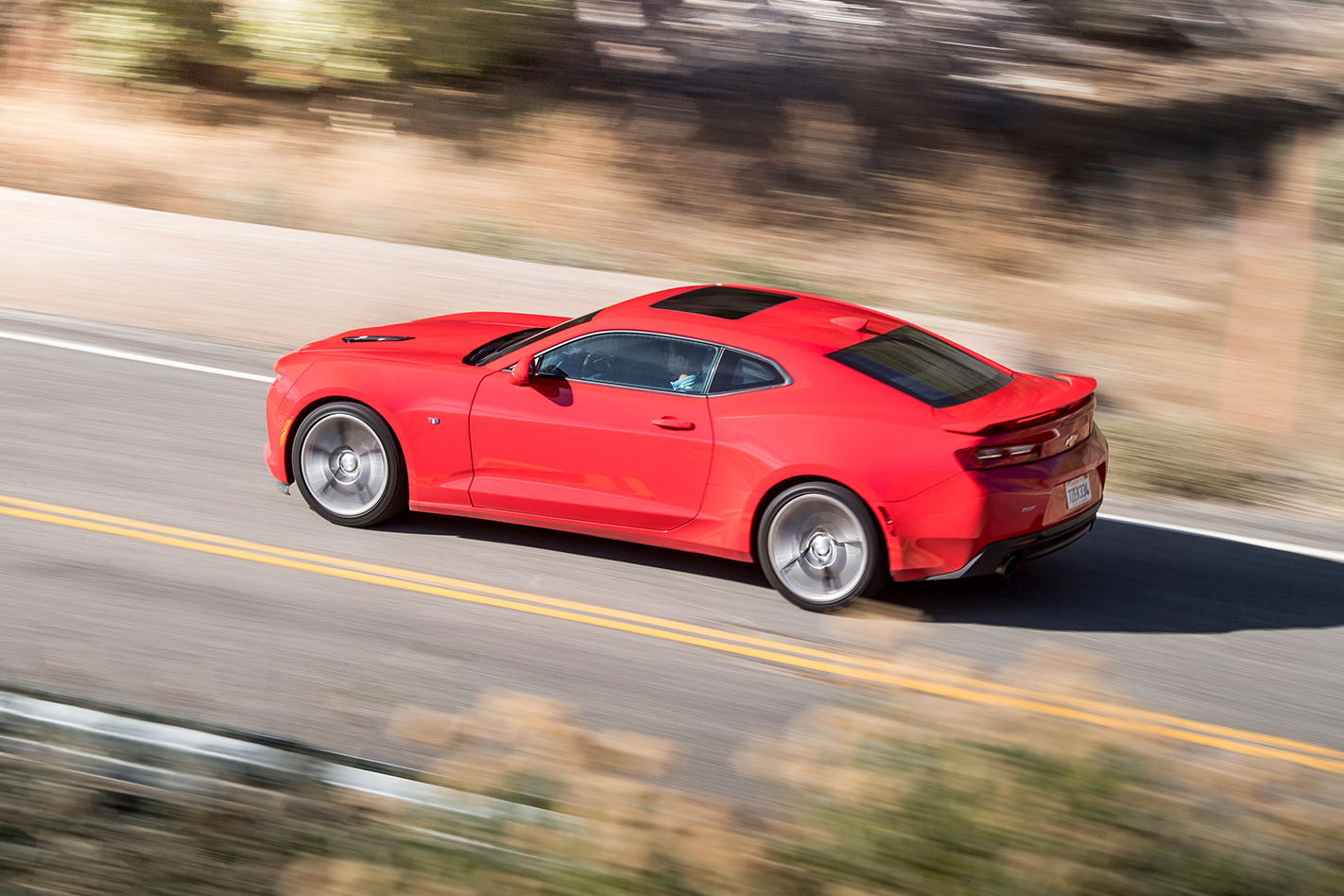
By comparison, the Chevrolet remains staunchly expressionless right up to the point the rear boots are about to peel off. On these canyon roads, where enthusiastic drivers regularly take an excursion into the scrub and the fines for crossing a solid line are vicious, it pays to adjust quickly to the different approach needed in the Camaro.
While the Ford is more friendly and forgiving and won’t punish you for being off the ideal line, the Camaro is more demanding and requires greater precision. Get it right in the Camaro, though, and it will carve corners with intoxicating pace.
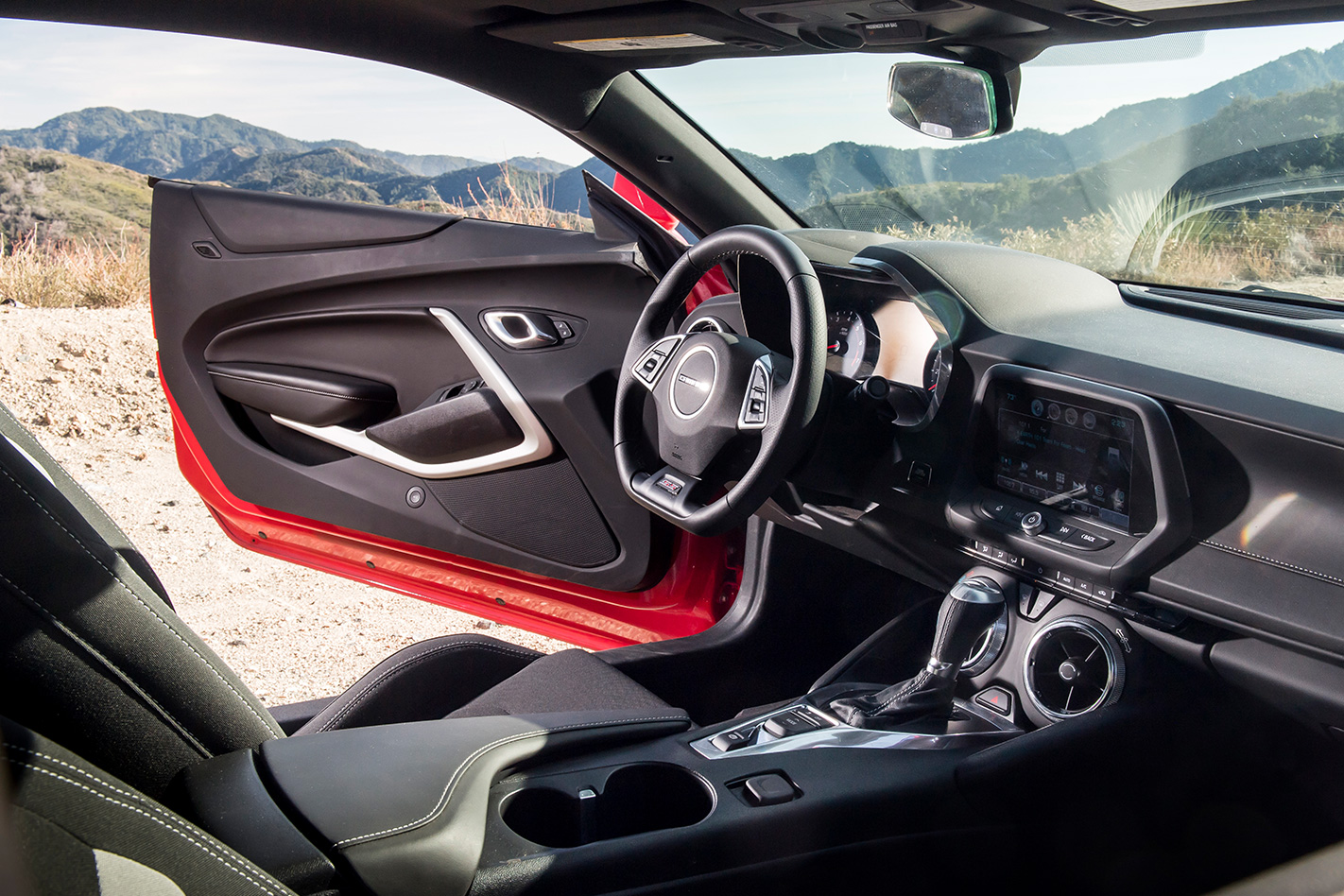
The sweeping canyon roads let you maintain momentum and speed, so we didn’t give the brakes a track-style workout to test the onset of fade. We can say, though, that both coupes can shed speed to match their prodigious acceleration, courtesy of six-piston Brembos on the Mustang and four-piston calipers on the Camaro.
There’s a lot to take in and co-driver Lyn and I pull up to a remote mountain siding to compare impressions. Our chat is quickly interrupted by a heavily modified Baja Bug that arrives in a din of air-cooled Volkswagen clattering and proceeds to rip up a large puddle in a frivolous display of doughnuts, before exiting in a shower of mud and stones. Yep, Californians really are car nuts.
Sunny, mid-20-degree days and clear blue skies make it easy to forget this part of the world is in the midst of winter, but the sun disappearing behind the mountains not long after 5:00pm prompts us to head back into the metropolis to partake in an all-American pastime.
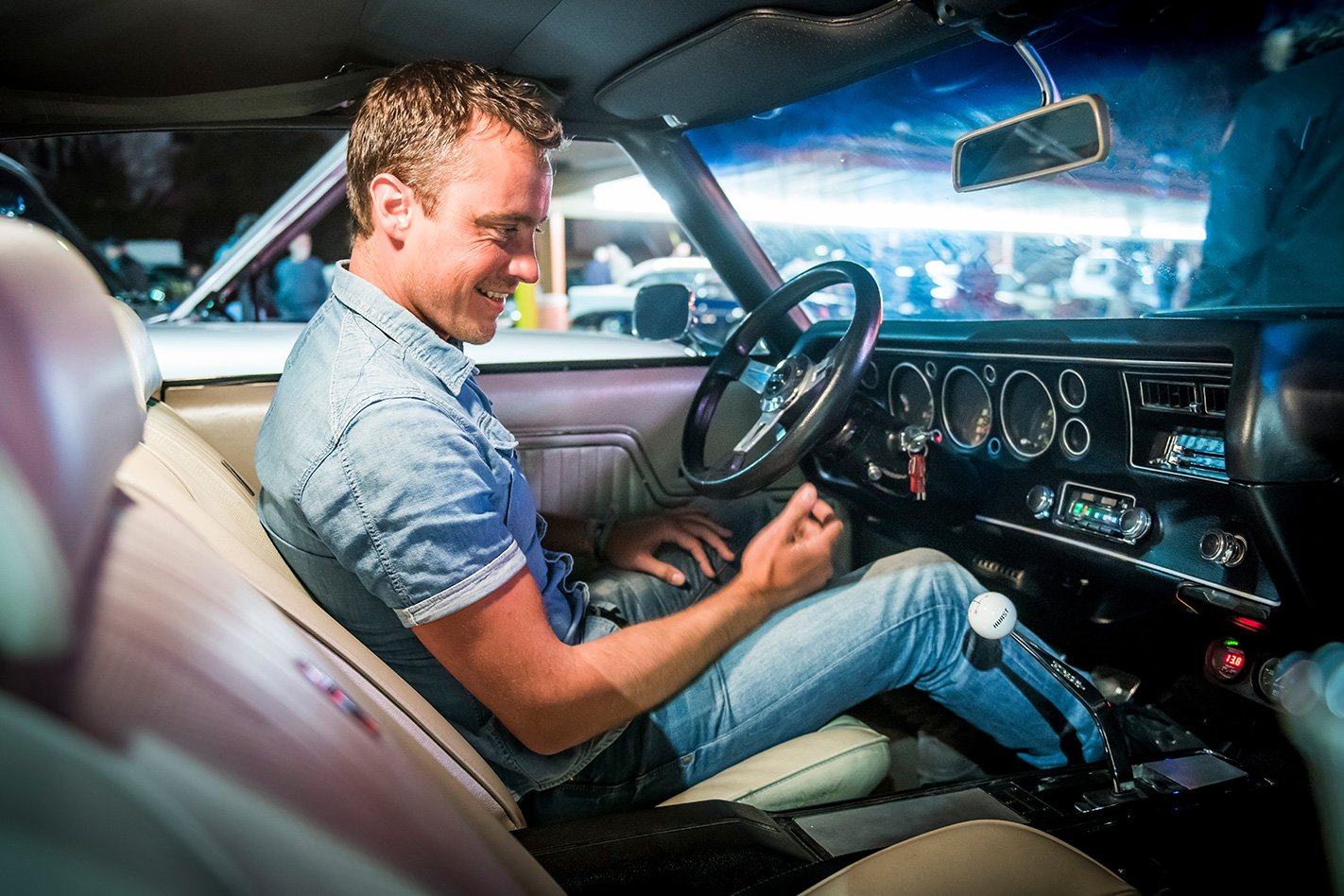
As I scull probably the most welcome cherry Coke I’ve ever tasted and nick some of the photographer’s fries, I pause to reflect on the pair of modern muscle coupes everyone is ignoring. It’s surprising that two cars so closely aligned in philosophy bring such different characters and skill sets.
The Mustang’s driver-friendliness, sophisticated engine and slick dial set earn it praise, while the Camaro counters with incredibly sharp dynamics and kick-in-the-pants design. The Ford design and engineering team faced the challenge of appealing to a whole new audience without alienating the longstanding American buyer.
In attempting to please many markets the Mustang has perhaps taken a small sideways step away from the muscle-car template. But is being an all-rounder really something you can criticise? And perhaps the patriotic Yankee Camaro would even benefit from a similar dose of cultural diversity?
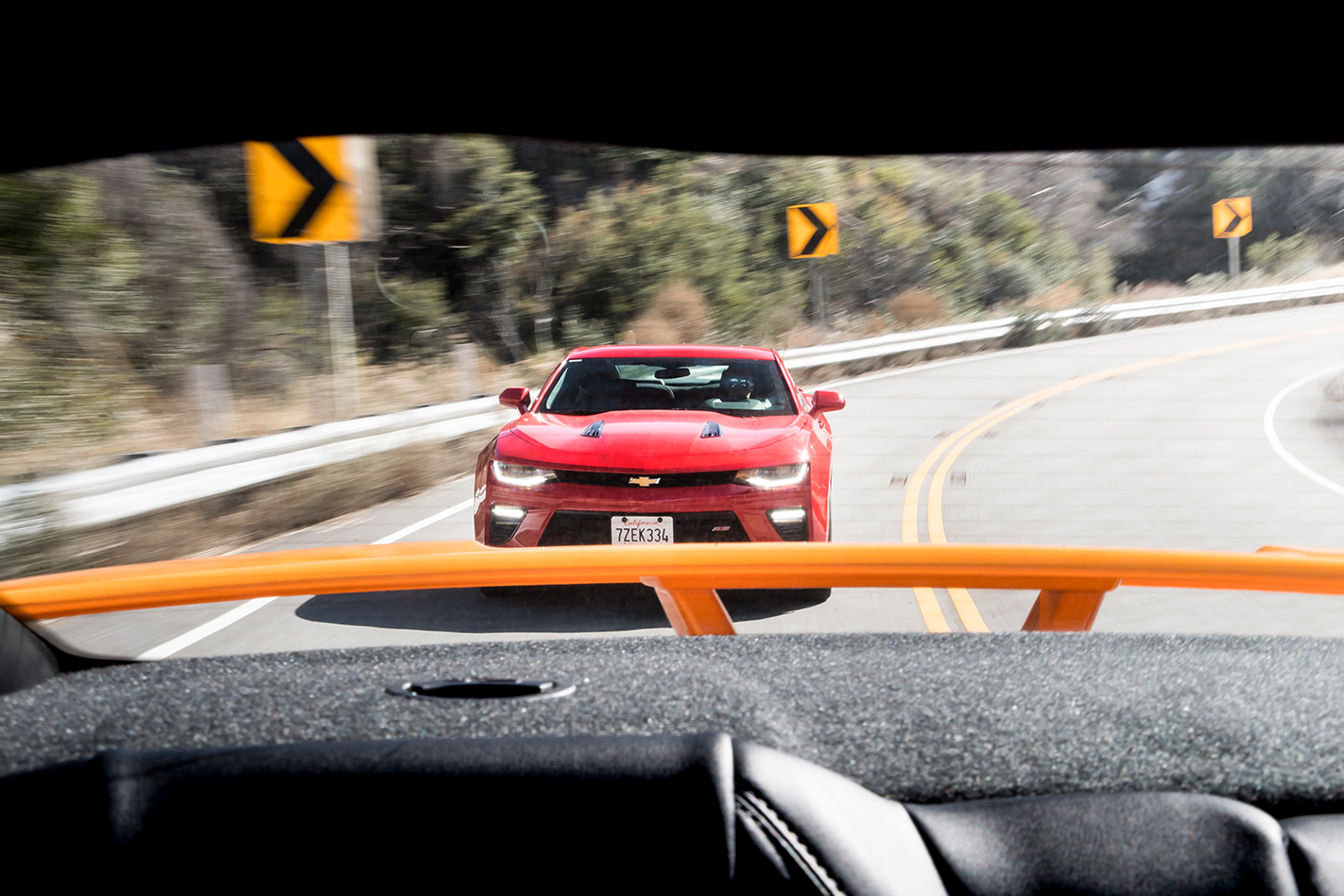
Is a little exclusivity and dynamic sharpness worth an extra $27K? At that price point, the Camaro is bound to come under harsher scrutiny, but it’s hard to put a price on the strength of brand allegiance.
The Camaro and Mustang may be taken largely for granted by their countrymen, but a General versus Blue Oval war with so few doors hasn’t been waged Down Under since the early ’70s when the Monaro butted heads with the Falcon Hardtop. In the glowing embers of the homegrown, high-performance era, this is the new story that rises from the ashes.


